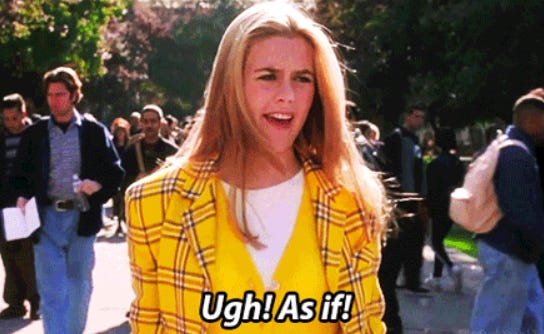99 External Cues: Part 3
Act as if
Let’s keep it going with this 99 External Cues series.
Quick refresher: one of the main themes of TLoC is that cues that promote an external focus of attention are generally superior to cues that promote an internal focus of attention. There’s some nuance to this (read the book people!), but, for the most part, we want to avoid a cue that references, “your hand,” or, “your foot.”
Part 3 of this series is going to focus on one of the most useful yet challenging forms of external cueing: analogies. First of all, for those of you who skipped English class, an analogy is a comparison using like or as.
So, “Hit the ball like…”
or
”Pass as if you were…”
Before reading these cues, see the previous 2 parts of this series if you want an explanation on why these cues are valuable and some of the challenges to creating external cues. The first 10 will be available for everybody and the rest of them will be behind the paywall.
Notes: Remember that the Cue is separate from the Discussion. You’ll reference body parts as part of the Describe/Demo/Discuss parts of the coaching loop. I put those parts in (parenthesis) because you’ll reference them when introducing the cues but not after that.
Finally, something you’ll notice as you see read these cues is that they require a bit more context and cultural familiarity. As Winkleman notes is his book, telling a certain group of Gen Z athletes that, “there’s a lot of hay left in the barn,” didn’t register quite as well as, “we still have some apps that aren’t done downloading.”
The upside of analogies is that they often have a strong visual and even emotional resonance. They can also chunk multiple pieces of a movement together. But you need to make sure you have a few minutes to explain what your analogy means. If you just start screaming, “hammer the nail!” out at practice, your players will probably just be confused and a little frightened.
Starting with some attacking cues:
(1) Push off (your second step) like a sprinter (coming out of the blocks).
(2) (Use your double arm lift) like a slingshot (to generate lift into the air).
(3) (Throw your arms back as if you were stretching rubber bands.) “Stretch the bands.”
(4) (Load your arm as if you were going to smash a pane of glass behind you with your elbow) “Smash the glass.”
(5) (Rotate through the ball as if it were a door you’re slamming) “Slam the door.”
(6) (Imagine your armswing is like hammering a nail, not throwing a punch) “Hammer the nail.”
(7) Approach down the sidewalk…
(8) … and cross at the intersection.
Those 2 will make more sense to those who have been to my Offensive Concepts seminar:
Some setting analogies:
(9) Set from the kitchen. (Not from down in the basement, or up on the roof, or out in the street.)
(10) Draw (your hands to the contact point) as if there was a wall in front of you. “Draw up the wall” (This helps setters who flick out forward as they draw)
Keep reading with a 7-day free trial
Subscribe to Smarter Volley by Joe Trinsey to keep reading this post and get 7 days of free access to the full post archives.


